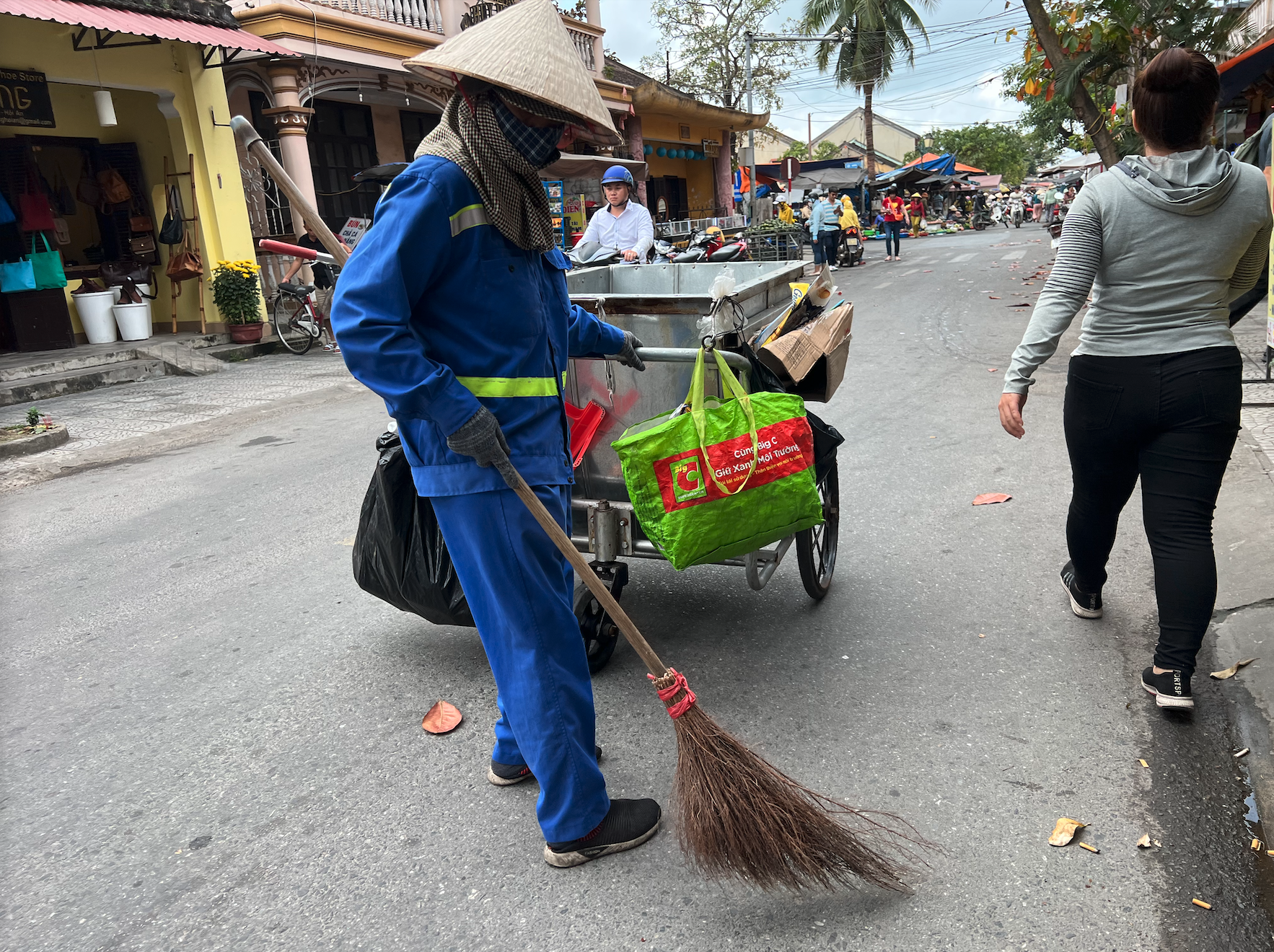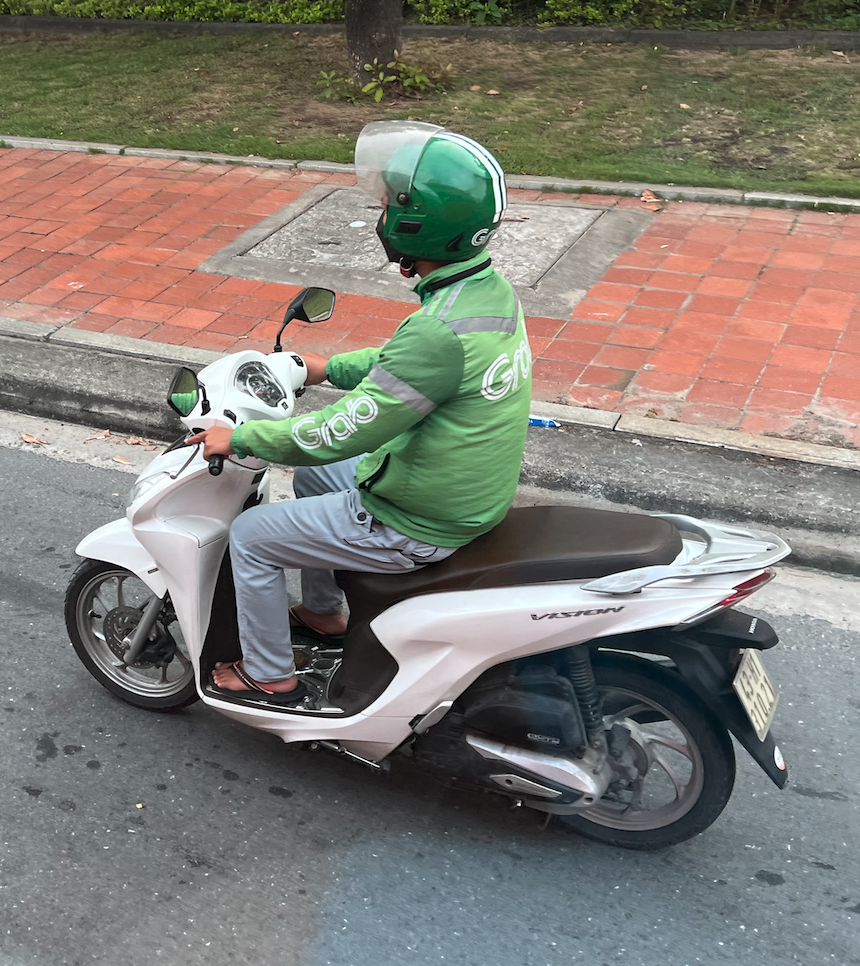Joe and I recently got back from Vietnam, Laos and Cambodia (with a quick overnight in Singapore to visit Changi and Jewel, as well). We’ve already written a few things about the trip but over the coming weeks (well, months), we’ll share more and more.
There are a few things we encountered in Vietnam that will never make it into a blog post or, for that matter, even the most well-researched guidebook.
I mean, sure, everyone will tell you to make sure you pick the best season to visit (your choices are dry season or wet season. Both will be oppressively hot and humid, but the wet season will also be cheaper, so pick your poison). Almost every guidebook will mention dressing conservatively (especially at temples) and to not be boastful or show public displays of affection. But show me a guidebook that mentions which is the artificial sweetener of choice in Vietnam and what you should do if you’re a fan of a different type of sugar substitute.
So that’s what this piece is about – the little hints that make things easier, or at least are little-known tidbits about visiting Vietnam.
The artificial sweetener thing
Whether you’re trying to lose weight or are not eating sugar due to medical reasons. artificial sweeteners, health risks and all, are a way of life for millions. If you’re going to Vietnam, and are a fan of what I humorously call “yellow stuff” (sucralose/Splenda) or “blue stuff” (aspartame/Equal), I strongly suggest you bring your own.
Most times when I ordered a drink that people would typically add sweet stuff to (usually coffee), it was rarely included with the drink. When it was, or if I asked, packets of white sugar and occasionally “pink stuff” (saccharine/Sweet’N Low) were included. A handful of places also offered Stevia, raw sugar and/or brown sugar. I never saw a packet of yellow or blue stuff while in Vietnam, save for the ones I brought.
Speaking of coffee
The Vietnamese are proud of their various brews (especially weasel poop coffee), typically made with robusta coffee beans. Joe tried several of them and although his condensed milk coffee and egg coffee were OK (I tasted both), I’m still much more of a fan of coffee made with arabica beans.
If you’re on the same opinion, ask for Americano or, if available, black French press if you’re looking for a more typical “American” style coffee. You can even ask for cold milk with them (although I got some weird looks for doing so).
More about food
The frozen-then-fried hash browns at just about every hotel buffet (at least the 3 we encountered in 3 different cities) look and taste exactly like McDonald’s hash browns. 😉
Their bacon looks like bacon you’d see in the U.S., but it’s not nearly as salty as ours.
Their egg yolks are orange.
Their orange juice is delicious and tastes like freshly squeezed, even when it’s not.
Also, hopefully you’re not someone who likes certain foods the way you like them and asks restaurants to make changes for you. That won’t fly in Vietnam; they don’t change foods to individual tastes. Don’t want onions on that salad and you want the dressing on the side? Too bad.
Kids
If you’re easily identifiable as an American, be prepared for every school aged kid you meet to say “Hello!” to you. When you say “Hello!” back, they all start to giggle with their friends. It’s adorable 😉 (And yep, it happens in other countries too. It’s just as adorable there, as well)
Street life
Grooming and other things Americans usually do in private appear to be absolutely fine on city streets. I personally saw a man cutting his toenails, a couple of people getting shaves, and a session of cupping therapy, all out on the street. I also saw some guy wearing a uniform peeing into a bush on a crowded street.
Public areas in the bigger cities tend to have trash thrown everywhere and some of it looks like it’s been there a long, long time. However individual storefronts are kept impeccably clean, and are swept several times per day, every day.
 Vietnam doesn’t have Uber or Lyft. Instead, you’ll see people on motorbikes wearing green jackets and helmets that say Grab. Grab (and Go-Jek, another company) is their version of Uber. And yes, it means the vast majority of ridesharing in Vietnam is on a motorbike.
Vietnam doesn’t have Uber or Lyft. Instead, you’ll see people on motorbikes wearing green jackets and helmets that say Grab. Grab (and Go-Jek, another company) is their version of Uber. And yes, it means the vast majority of ridesharing in Vietnam is on a motorbike.

Crossing the street
Speaking of motorbikes…y’all I’m a native New Yorker; I have no fear of crossing crowded streets. In Saigon/Ho Chi Mihn City? It took me THREE DAYS until I felt brave enough to cross the street by myself.
Motorbikes were everywhere and it felt like traffic lanes (including the ones in the middle, that delineate what direction you’re going!) were just suggestions.
Plenty of guidebooks will tell you the safe way to cross the street…establish eye contact with drivers, maintain your speed, etc. If you’re on a particularly busy street, I’M telling you to cross when “someone who knows what they’re doing” crosses. Cross the same street at the same time as them! It worked for me!
Buying things
Vietnam has no coin money; just bills in various amounts of dong (that’s the name of their currency. The Vietnamese equivalent of dollars, Euros, yen, etc). The smallest denomination is 1,000 dong.
Dong has comparatively little value in U.S. dollars. I mean, it takes 250 dongs to make one U.S. penny. So even if you talk about what initially sounds like a large amount – say a MILLION dong – it’s still only about $42 and change.
You’ll be happy to know that most things in Vietnam are super cheap in comparison to the U.S. Two dinners plus cocktails and wine were about $75-$80 at a nice place. The problem is trying to do the conversions when $1 = 25,000 dong. Y’all, I’m decent in math and could not do the conversations in my head to figure out how many dollars something would cost if the price was in dong. I’d take off the 3 zeroes, but dividing by 25 was just messing with my head (I blame the jet lag). My advice? Have your calculator or a conversion app at the ready!
Also, prepared to haggle, especially at markets. We were told that paying about 30% less than the asking price was fair and appropriate. Don’t hesitate to hold your ground – our group had a white elephant gift exchange where we all had to buy gifts at the local market; the most we could pay was 80,000 dong. I found a bell chime thing that cost 120,000 dong. I offered 80,000.
Her: no, 110,000 dong
Me: 80,000 dong
Her: 100,00
Me: 80,000
Her: 90,000
Me: 80,000
Her: 90,000 is as low as I’ll go
Me: Look, all I have is 80,000. It’s 80,000 or nothing.
Her: OK, 80,000
Personally, I hate to haggle. HATE it. Between that and the whole conversion thing, I can’t even tell you how little I bought in Vietnam LOL!
Flora & Fauna
Most of Vietnam has a tropical climate; the northernmost and more temperate part of the country is at roughly the same latitude as Key West, FL, and the further south you go, the closer you are to the Equator. So it’s not surprising that a lot of the things growing there are similar to what you’d see in more tropical climates. Palm trees. Cordyline. Bougainvillea. Croton plants. If you’re prone to allergies, bring your allergy meds; you’ll need them in Vietnam!
Southerners might be particularly amused (or empathetic) that Vietnam also has what may be considered a scourge of the south: Kudzu! I’m not 100% sure if it was the exact same plant we have here in the U.S., because I only saw it while we were whizzing past it on various shuttle buses in different cities, but SOME sort of invasive vine was doing its best to take over in some natural areas.
I’m also pretty sure I saw a couple of palmetto bugs in Vietnam. #IYKYK (I’m saying that because I’m hoping they weren’t giant cockroaches).
Indoor Temperatures
We read in several tour books that although Vietnam tends to be hot and humid outside, the Vietnamese really crank up the air conditioners inside, so consider bringing a sweater everywhere if you chill easily.
Travel friends, those tour books lie like a rug.
Most indoor places we visited (museums, shops, restaurants, temples, shows, etc.) had fans on. Sure, that meant the air was circulating, but it was 90 degree air with 90% humidity that was circulating. A handful of places had space air conditioners but they were never big enough to cool an entire room (sure felt good walking past them, though).
The ONLY exception to this? The ladies’ room off the lobby at the Hyatt Regency Danang Resort & Spa. It was easily only 65 degrees in there. 😉
The Toilets
Toilets are definitely a trip in Vietnam. Some things to keep in mind:
- Bring your own toilet paper. Most toilets made for the public had toilet paper, but not always. And some places had a HUGE roll of TP outside the stalls, where you’re expected to take your share before entering one of the stalls. If that’s the case and you wind up needing more TP than you intended, you’re SOL (no pun intended). BYOTP (even just a pack of tissues)
- Speaking of TP, except maybe at higher-end hotels in big cities, it’s frowned upon to flush anything but bodily waste. All toilet paper is expected to go in the trash can next to/near the toilet. As an American, that was a HARD lesson to remember. The stalls weren’t particularly stinky, considering each had a trash can of used TP in it, but I’m guessing the use of bum guns helped this. Read on…
- Ah yes, the bum guns. The Vietnamese’ public toilets, similar to those in Thailand, Cambodia and a few other locations, have water sprayers attached to them, meant for you to clean your nether regions after you’ve had a bowel movement. Here’s how to use one.
- Most public toilets with a queue are similar to the U.S.; you stand in one line and when the next stall becomes available, the next person in line takes that stall. We did encounter one queue in a ladies’ room on the property of a temple that was different. Each stall had its own queue. Check which method is being used, and queue accordingly. Otherwise you’ll stand there for 5 minutes, wondering why you can’t get into a stall. 😉
Feature Image: Arian Zwegers / flickr / CC BY 2.0
Want to comment on this post? Great! Read this first to help ensure it gets approved.
Want to sponsor a post, write something for Your Mileage May Vary, or put ads on our site? Click here for more info.
Like this post? Please share it! We have plenty more just like it and would love it if you decided to hang around and sign up to get emailed notifications of when we post.
Whether you’ve read our articles before or this is the first time you’re stopping by, we’re really glad you’re here and hope you come back to visit again!
This post first appeared on Your Mileage May Vary

1 comment
Good list. Most of it applies to lots of other SE Asia countries as well. I got off easy on my first trip to the region as my wife and I went to Bali, which is a particularly forgiving culture.